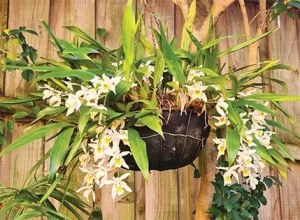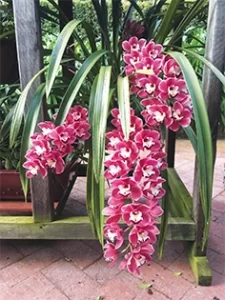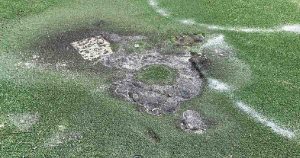THE GALSTON DISTRICT GARDEN CLUB IS ‘THE CLUB YOU HAVE WHEN YOU ARE NOT MEETING AS A CLUB’
Again we have had to postpone our meetings to the 2nd Wednesday of the month at 7.30. The members are so looking forward to when we can meet, socialize and share their gardening knowledge.
New members are warmly welcome, and your botanical knowledge will be entirely adequate. Our members range from beginners to very experienced. We use our interest in gardening as a great excuse for social gatherings and garden rambles. When we do meet, there are interesting talks and displays at each meeting. We have an extensive library of gardening books and DVDs that members can borrow.
 The Galston Open Gardens’ date is the weekend 19th, 20th and 21st November 2021. The final decision regarding holding this event will be made early in October. So stay tuned and keep your fingers crossed that the Covid restrictions placed upon everyone will be eased enough for us to ramble through many beautiful gardens.
The Galston Open Gardens’ date is the weekend 19th, 20th and 21st November 2021. The final decision regarding holding this event will be made early in October. So stay tuned and keep your fingers crossed that the Covid restrictions placed upon everyone will be eased enough for us to ramble through many beautiful gardens.
Our Facebook page has been a wonderful escape for our members. We have enjoyed pictorial rambles through many members’ gardens. I was particularly impressed by the orchid display in a post from one of our members, and it motivated me to get my orchids blooming next year, but how?
 According to Yates, cymbidiums are just about the easiest orchid to grow, but their reluctance to flower can be frustrating for gardeners (you can say that again). Apparently, light is the most essential factor. The hot sun will burn the leaves, but too little sun will reduce flowering.
According to Yates, cymbidiums are just about the easiest orchid to grow, but their reluctance to flower can be frustrating for gardeners (you can say that again). Apparently, light is the most essential factor. The hot sun will burn the leaves, but too little sun will reduce flowering.
Dappled light is best. In frosty areas, cymbidiums can be grown indoors but must be in a well-lit position. Cymbidium leaves should be a light apple green. Deep green leaves may look lush but are usually an indication that the orchid is in too much shade. The ideal is to have your orchid in the shade for the spring/summer period and move it into a bit more light for late summer and autumn. Keep it out of strong winds or very exposed positions.
WATERING: Cymbidiums are naturally tree dwellers that have evolved thick, water-absorbing roots to help them survive arboreal life. Grow them in a coarse orchid mix and make sure the plants have plenty of drainages. Don’t leave the pot base sitting in a saucer that collects water. One tip is to use an unpainted wooden pencil to test moisture levels in the soil. Spike the end of the pencil down through the roots into the mix. If the pencil looks damp when it comes out of the soil, the plant doesn’t need water. Reduce watering in winter cymbidium roots hate being cold and wet.
FERTILIZING: Begin feeding cymbidiums as soon as their flowering period is over (or if yours haven’t flowered when those in your neighbourhood have finished). Dynamic Lifter pellets are ideal for the spring fertilizing period – feed with a light sprinkling of pellets about every six weeks. After Christmas, switch to a flower promoting liquid such as Thrive Orchid Food. Because this doesn’t last as long, it should be applied once a fortnight.
DIVIDING AND REPOTTING: A crowded orchid can be divided in spring but don’t break the clump up into too many small sections. The smaller the clump, the longer it takes to flower again.
OTHER TIPS: Don’t leave dead flower spikes on the orchid. Remove as soon as the blooms have finished. Slugs and snails love orchid buds – use Baycol or Blitzem pellets around the plant to protect them. Scales and mealybugs can weaken plants. A spray of Yates Nature’s Way Citrus And Ornamental Spray will help.
For more information regarding the Galston District Garden Club please visit our website, www.galstongardenclub.com.au or email: galstongardenclub@gmail.com.






